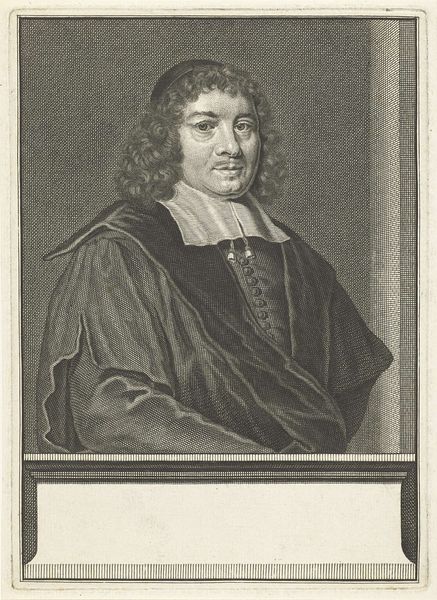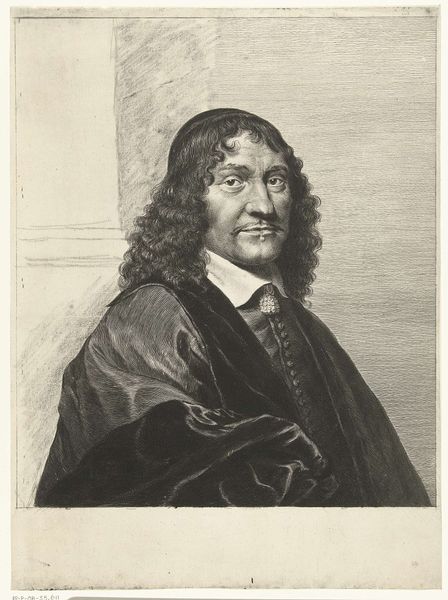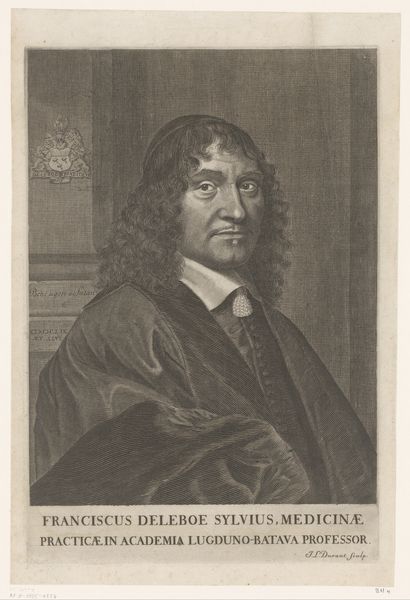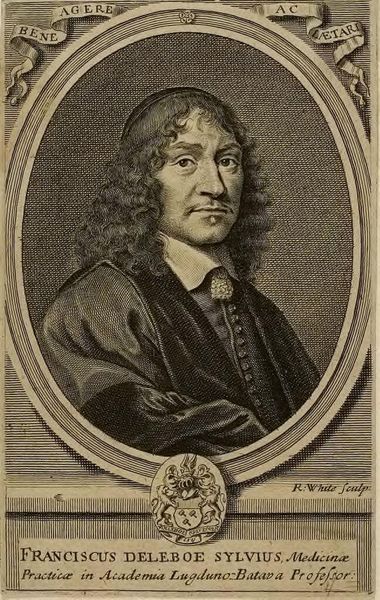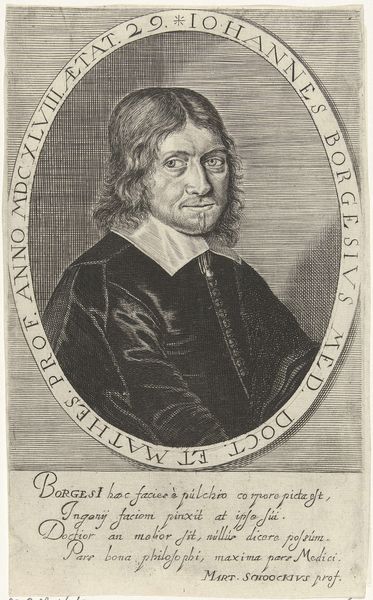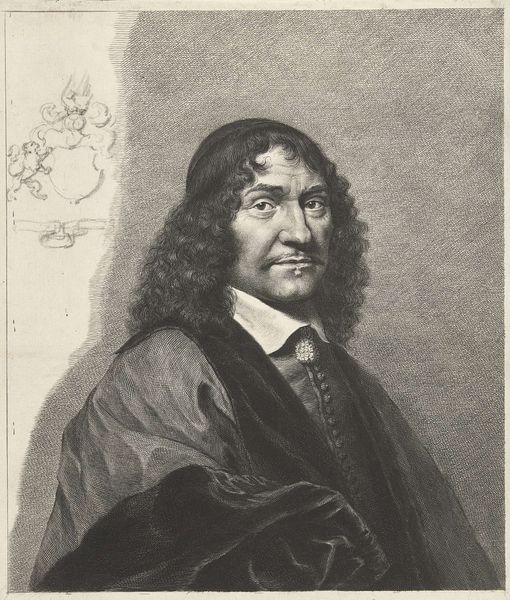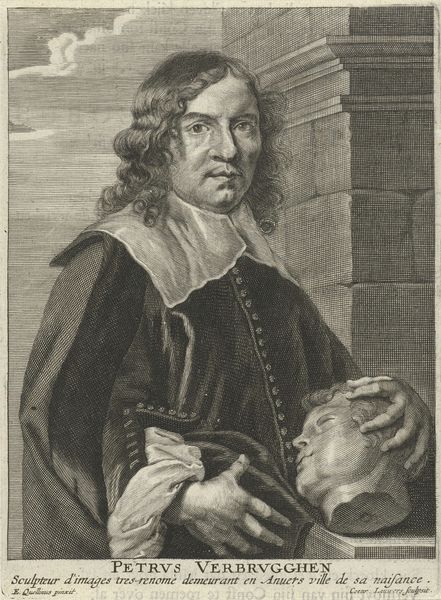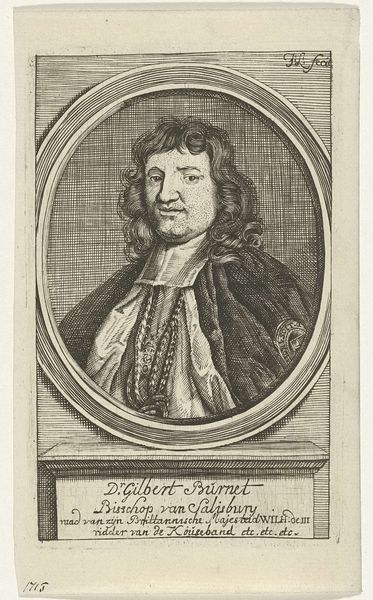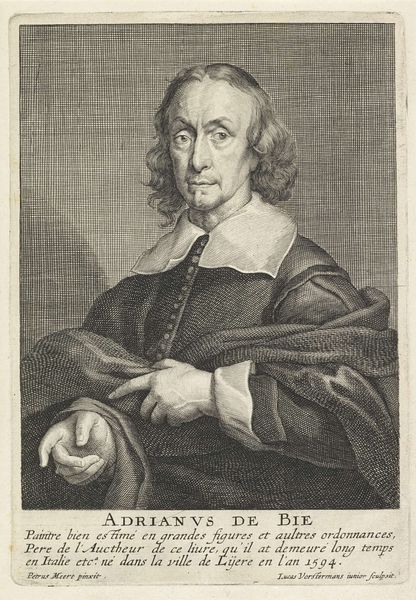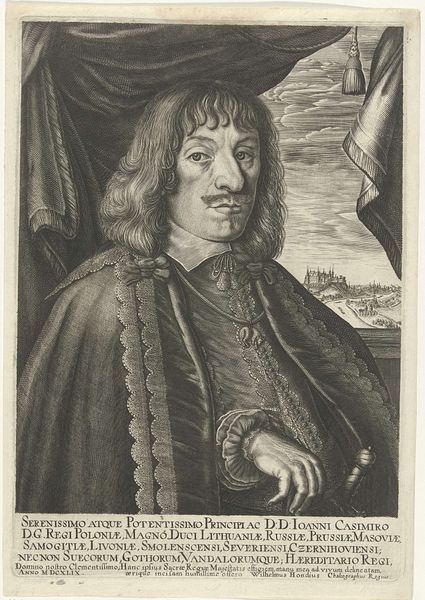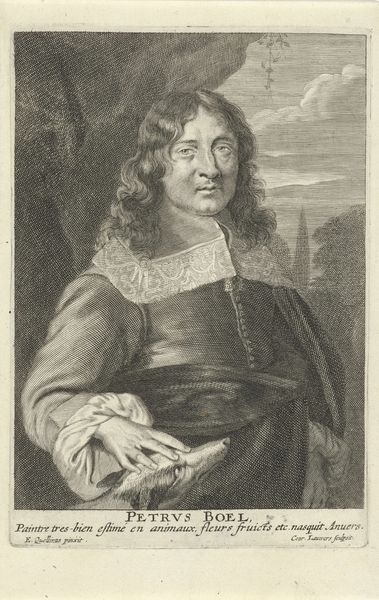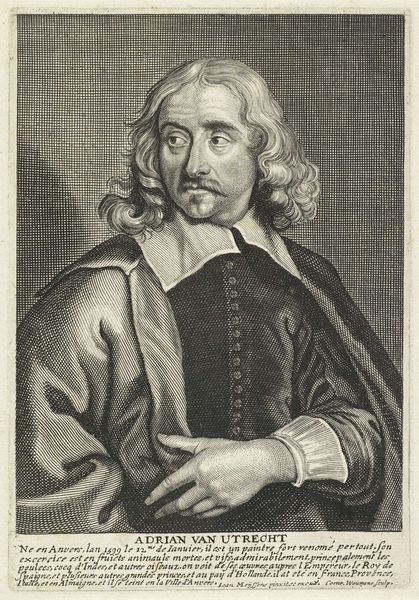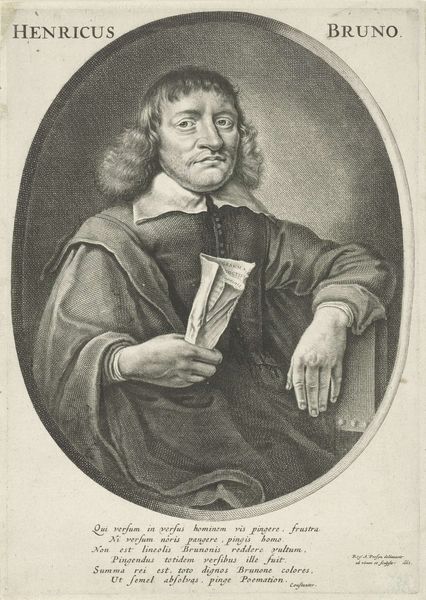
engraving
#
portrait
#
baroque
#
dutch-golden-age
#
old engraving style
#
portrait reference
#
pencil drawing
#
portrait drawing
#
history-painting
#
engraving
Dimensions: height 100 mm, width 68 mm
Copyright: Rijks Museum: Open Domain
Curator: Here in Gallery 12, we see a work simply titled "Portret van Franciscus de le Boë Sylvius," an engraving dating sometime between 1659 and 1709, and currently held here at the Rijksmuseum. Editor: Immediately striking. There’s a formality to it, of course, inherent in the portraiture style. But the incredible detail in the hatching creates this texture almost… tactile quality. The dark coat is especially effective. Curator: The work offers insight into the public image of notable academics during the Dutch Golden Age. Sylvius was a prominent physician and professor at Leiden University. Prints like this one served as both a commemoration and a means of circulating his image amongst the intellectual circles of the time. Notice the engraved text below his portrait, listing his titles. Editor: Yes, and observe the sharp contrast achieved purely through line work. The engraver expertly models form and shadow—a masterclass in chiaroscuro without the luxury of color. Look at the detailing on his collar and the way the light catches the individual strands of hair. It directs our focus impeccably. Curator: Engravings like these were crucial for disseminating knowledge and fostering intellectual exchange in an era before photography. Sylvius was known for his groundbreaking work in medicine and chemistry. The print contributes to the construction of his legacy and academic reputation. The crest, the latin phrasing—all contribute to his elevated position in society. Editor: I am captivated by the abstract patterns created in the background. A mesh of lines. It almost feels contemporary! Curator: Exactly. These visual representations not only served as portraits, but also as a form of historical documentation and promotion of the individual's accomplishments. Editor: The artist really manages to evoke a sense of gravitas with such economical means. Looking at his intense, steady gaze, one is left contemplating the relationship between the scientific revolution, human expression and art itself. Curator: The intersection is where the art thrives! It highlights how visual culture contributed to constructing and reinforcing societal values. Editor: Absolutely. A deeply captivating work of art for any lover of design and art history!
Comments
No comments
Be the first to comment and join the conversation on the ultimate creative platform.
